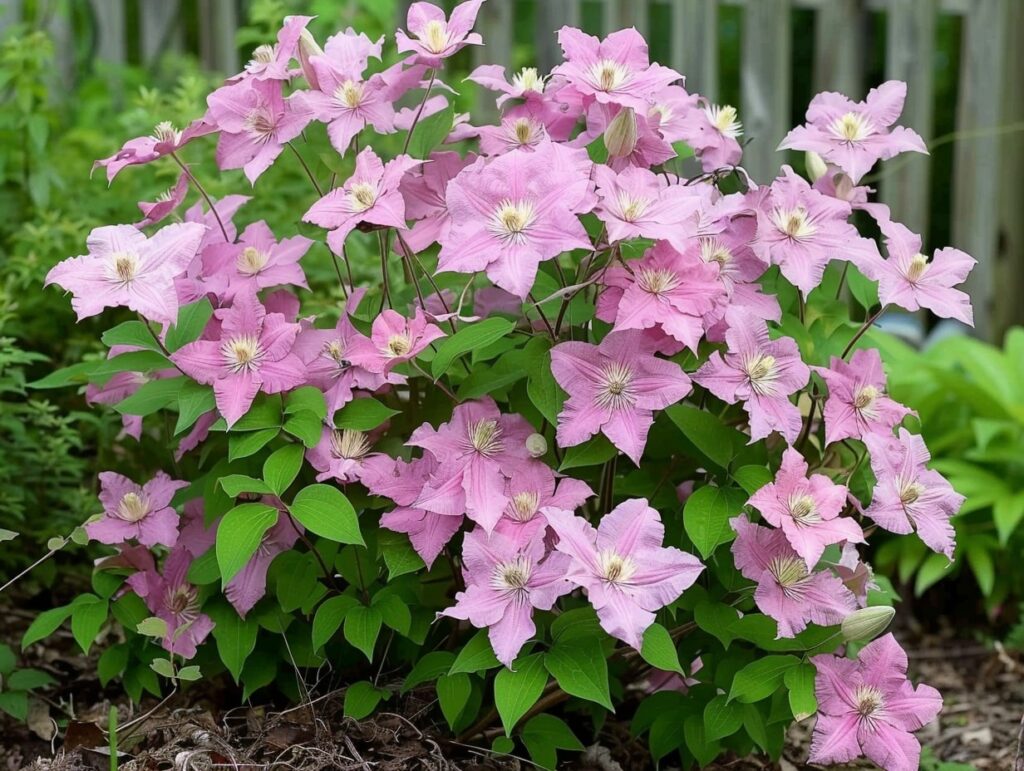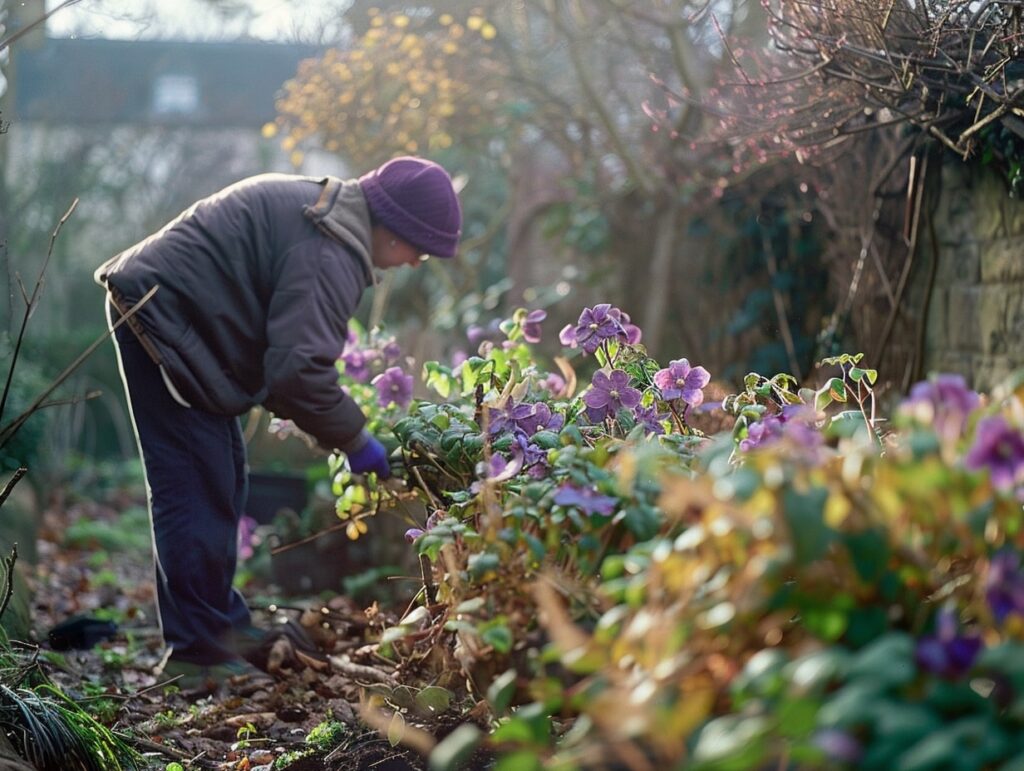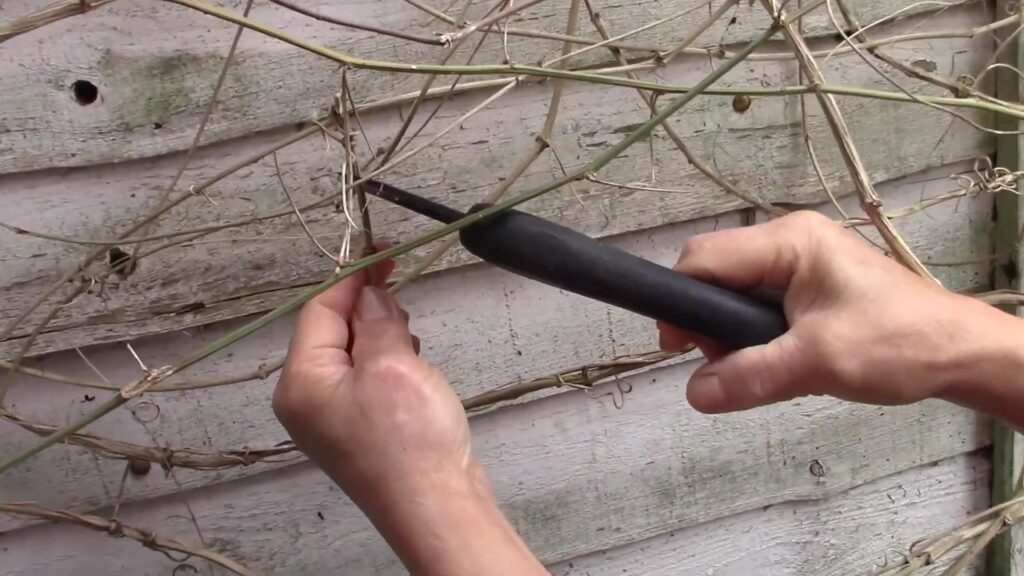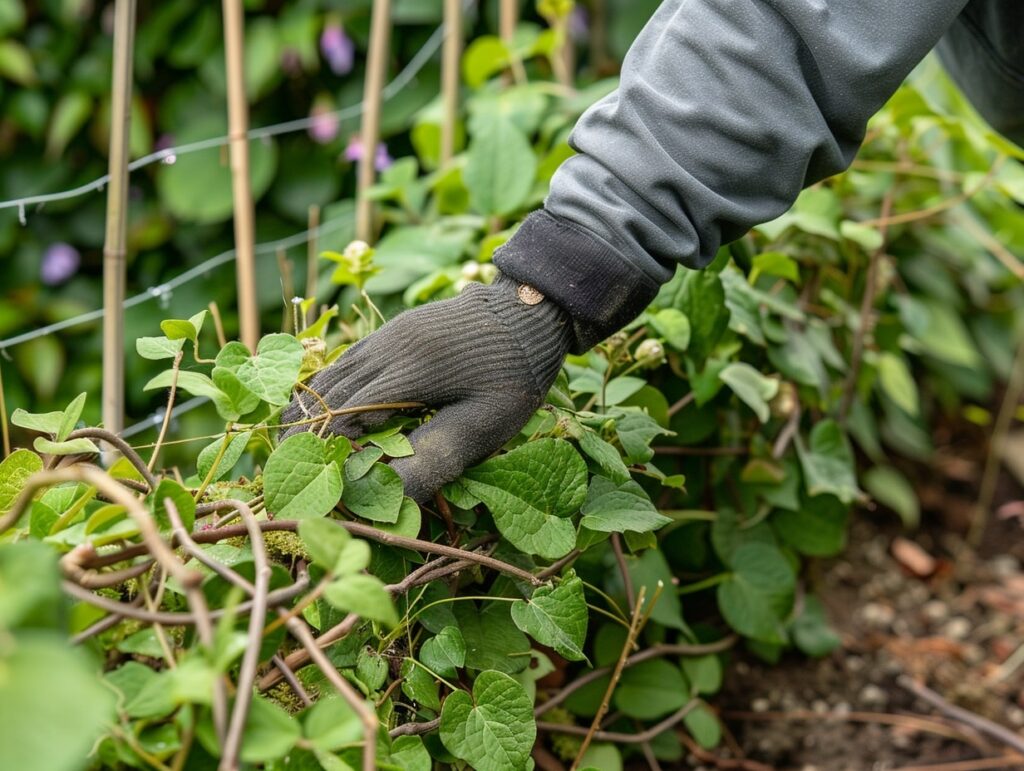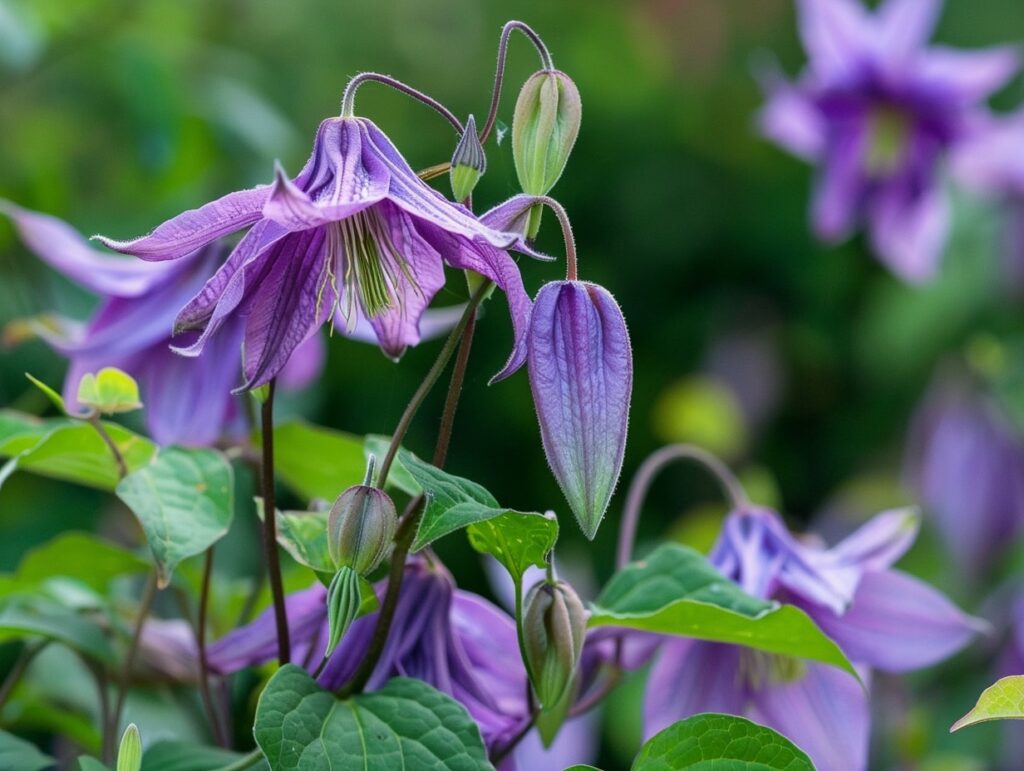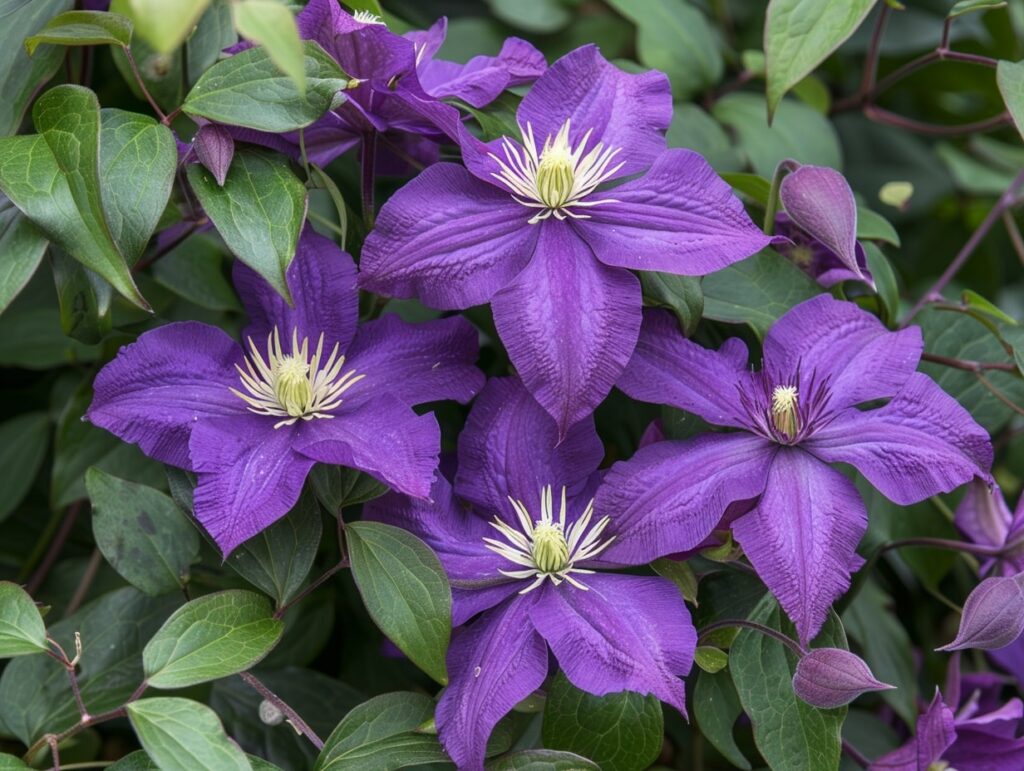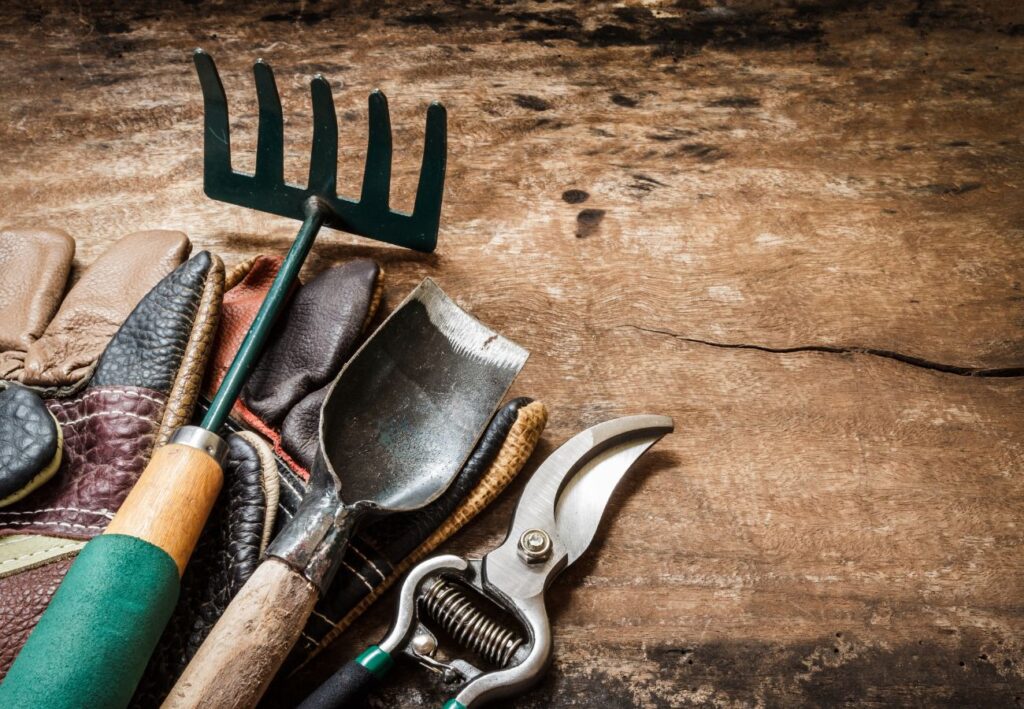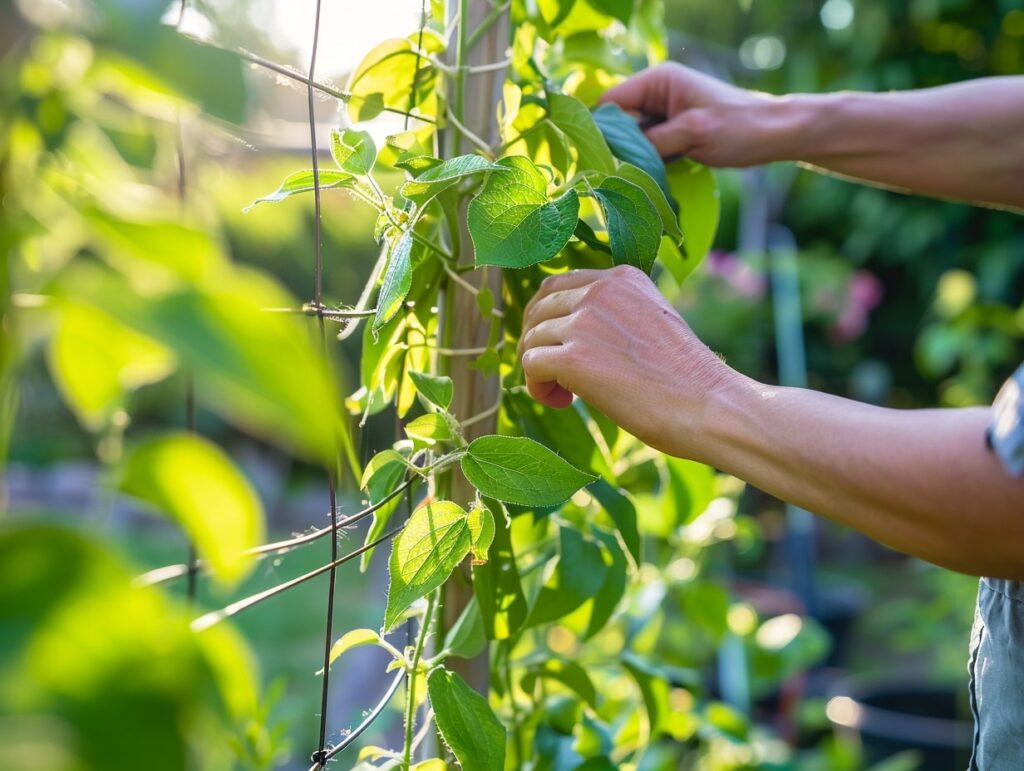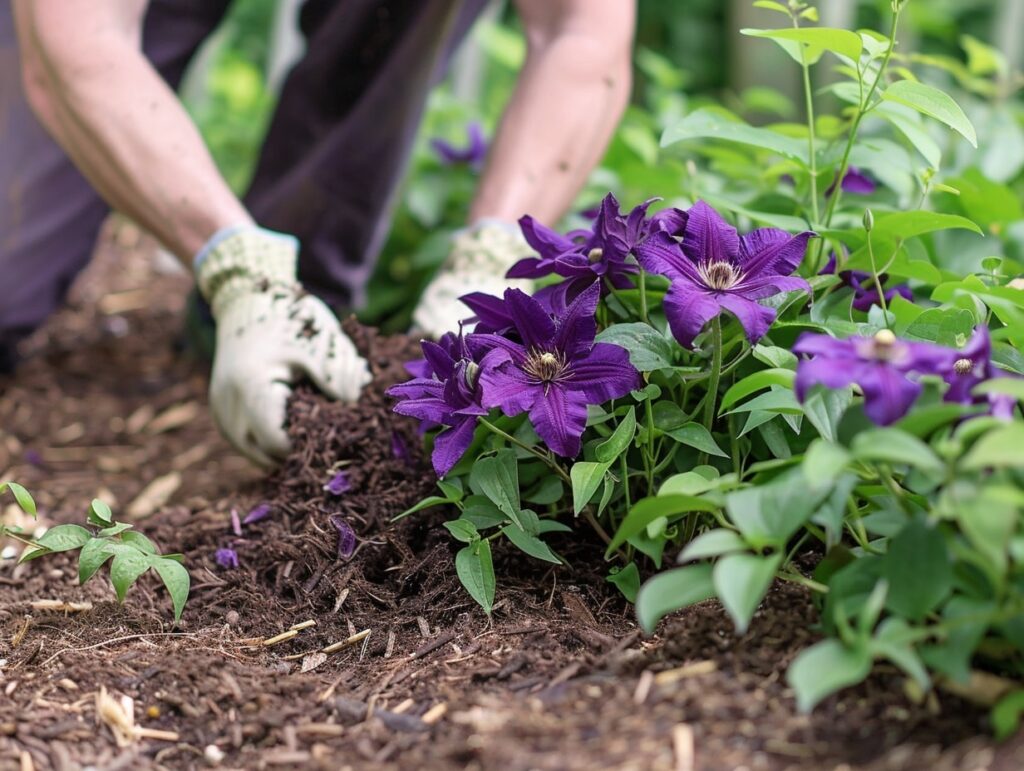Ever dreamed of having clematis vines that transform your garden into a blooming paradise? The key to this enchanting vision is knowing precisely when and how to prune.
Perfect timing leads to healthy growth and an abundance of flowers, while a misstep can leave you with weak, flowerless plants.
But worry not! Our easy-to-follow guide, complete with a clever traffic light system, takes the guesswork out of pruning.
By identifying your clematis’ pruning group, you can effortlessly remember whether to prune early, mid-season, or late. This foolproof method guarantees vibrant blossoms and a thriving vine.
Get ready to master clematis pruning and make your garden the talk of the town with our expert tips!
Understanding Clematis Pruning Groups
When it comes to pruning clematis, it’s crucial to know which group your plant belongs to. The timing and method of pruning can greatly influence flowering and growth.
Group 1: Early-Flowering Varieties
Early-flowering clematis bloom in late winter to early spring on old wood. This means they produce flowers on the growth from the previous year. Prune immediately after flowering, usually around late spring. Remove dead or weak stems to encourage healthy growth.
Examples: Clematis montana, Clematis alpina, Clematis armandii.
Tip: Be careful not to cut too much, as it will reduce the number of blooms for next year.
Group 2: Large-Flowered Hybrids
These clematis bloom in two waves: first in late spring to early summer on old wood, and then again in late summer to early fall on new growth. Prune in early spring when buds begin to swell, removing dead or weak stems.
Examples: ‘Nelly Moser’, ‘Henryi’, ‘The President’.
Maintenance: Light pruning to remove dead wood after the first flush of flowers can help promote the second wave of blooms.
Group 3: Late-Flowering Varieties
Late-flowering clematis bloom from midsummer to fall on new wood. Prune hard in late winter or early spring, cutting back stems to about 12-18 inches above the ground. This encourages vigorous growth and abundant flowers.
Examples: Clematis viticella, Clematis tangutica, ‘Jackmanii’.
Note: Don’t be afraid to prune these heavily; they respond well to a hard cutback and will reward you with numerous blooms.
The Traffic Light Guide to Pruning Clematis
Adjusting your pruning techniques based on the specific needs of your Clematis is essential. The following guide categorizes these techniques into three levels: gentle, moderate, and hard pruning.
Green Light: Gentle Pruning
Gentle pruning is ideal for Clematis that bloom on old wood. This category includes Clematis montana and Clematis alpina types. Prune after flowering, cutting back only the stems that have flowered.
Focus on removing dead or damaged stems to maintain healthy growth. Using clean, sharp pruners, trim just above a pair of strong, healthy buds.
Avoid heavy pruning as it may reduce next year’s flowering. Keep this light and precise to encourage abundant blooms.
Amber Light: Moderate Pruning
Moderate pruning suits Clematis that bloom on both old and new wood. Clematis varieties like ‘Nelly Moser’ fall under this category. You can prune twice a year: a light prune after the first flowering and a more thorough prune in late winter to early spring.
Cut back one-third of the oldest stems to encourage new growth. Remove weak or spindly stems to promote stronger growth. Aim to shape the plant and control its size while ensuring airflow and light penetration.
Red Light: Hard Pruning
Hard pruning is essential for Clematis that bloom on new wood, such as Clematis viticella and Clematis texensis varieties. This technique should be carried out in late winter or early spring before new growth starts.
Cut all stems back to 12-18 inches above the ground, ensuring at least two sets of strong buds remain. This promotes vigorous growth and ensures a robust display of flowers.
Removing the majority of the previous year’s growth helps rejuvenate the plant and keeps it under control.
Be bold, as this method encourages the healthiest, most vigorous growth for this type of Clematis.
When to Prune Your Clematis
Knowing the right time to prune your clematis ensures healthy growth and abundant blooms. Timing varies based on the clematis group.
Optimal period for Group 1
Clematis in Group 1 bloom on old wood, meaning they flower on the previous year’s growth. To encourage maximum blooms, prune these clematis right after they finish flowering in late spring or early summer.
If you prune in autumn or winter, you risk cutting off next year’s flower buds. Remove any dead or weak stems to open up the plant and improve air circulation.
Trimming away only a small part of each stem will help maintain the overall shape and size of the plant. Avoid heavy pruning, as this can reduce flowering the following year.
Optimal Period for Group 2
Clematis in Group 2 includes large-flowered hybrids that bloom in two waves: first in late spring to early summer on old wood, and then again in late summer to early fall on new growth. The timing for pruning these clematis is crucial to support both flowering periods.
Prune them in early spring when buds begin to swell. Start by removing any dead or weak stems. This helps to clear the way for new growth and ensures that the plant remains healthy and robust.
After the first wave of flowers has finished blooming, lightly prune the plant by removing dead wood and trimming back some of the spent flower stems.
This light pruning encourages the plant to produce new growth, which will support the second wave of blooms later in the season.
Optimal Period for Group 3
Clematis in Group 3 develop their flowers on new wood, blooming later in the season, usually from mid-summer to fall. Prune these vigorously in late winter or early spring before new growth begins.
Cut the stems back to about 12-18 inches from the ground. This encourages robust new growth that will support the coming season’s flowers. Removing old stems helps to rejuvenate the plant and ensures a better display.
Regular, hard pruning keeps Group 3 clematis healthy and prevents them from becoming overgrown, ensuring they remain manageable and visually appealing in your garden.
How to Prune Your Clematis
Pruning clematis is crucial for encouraging healthy growth and abundant blooming. Use proper tools, make healthy cuts, and follow shaping techniques to keep your clematis flourishing.
Tools and Sanitization
Use a pair of sharp pruning shears for clean cuts. Dull tools can tear the vines, causing damage.
Prior to cutting, sterilize your tools with alcohol or a 10% bleach solution. This helps prevent the spread of diseases. Clean tools after each pruning session.
Wear gloves to protect your hands from thorns and sap. A small rake can help clear away cuttings and debris, keeping your work area tidy.
Techniques for Healthy Cuts
Timing is key. Prune in late winter or early spring before new growth begins.
Cut just above a bud facing outward. This encourages growth away from the plant center, preventing overcrowding.
Remove dead or damaged stems first. Then, thin out the plant to improve air circulation. Leave the strongest stems intact to support the plant structure.
Shaping and Training Methods
Direct new growth along a trellis or support structure. Use soft ties to gently secure the vines without causing damage.
Shape your clematis by selectively trimming to maintain the desired form. For bushier growth, pinch back the tips of young shoots.
Trim back older growth to promote new flowering stems. Regular shaping ensures a healthy, attractive plant that blooms abundantly.
Aftercare Following Pruning
After pruning your clematis, it’s crucial to take care of watering, feeding, mulching, and pest control to ensure vigorous growth and blooming.
Watering and Feeding
After pruning, your clematis needs consistent moisture. Water deeply to keep the soil moist but not waterlogged. Aim for about 1 inch of water per week, making sure to water at the base of the plant to avoid wetting the foliage.
Feeding is essential to promote strong growth. Use a balanced fertilizer, such as a 10-10-10 or 5-10-5 mix. Apply according to the package instructions, typically around the base of the plant.
Compost or well-rotted manure can also be beneficial, providing slow-release nutrients.
Mulching and Pest Control
Mulching helps retain moisture, regulate soil temperature, and suppress weeds. Apply a 2-3 inch layer of organic mulch, such as straw, leaves, or compost. Ensure the mulch does not touch the stems to prevent rot.
Monitor for pests like aphids and slugs. Neem oil or insecticidal soap can control aphids. For slugs, use iron phosphate bait or hand-pick them during the evening. Regular inspection helps catch problems early, keeping your clematis healthy.
Incorporating clematis vines into your garden can transform it into a vibrant and lush paradise, but understanding when and how to prune these beauties is key to their success.
Pruning at the right time not only ensures healthy growth and abundant blooms but also prevents common issues such as missed flowering periods or weakened plants.
With our friendly guide and simple traffic light system, you can confidently navigate the complexities of clematis pruning.
When you identify your clematis’ pruning group, you’ll be able to follow specific guidelines tailored to your plant’s needs.
Our traffic light guide—green for gentle pruning, amber for moderate pruning, and red for hard pruning—simplifies the process, making it easy to remember and apply.
This approach ensures that you can enjoy a thriving clematis vine with spectacular blossoms year after year.
As you dive into our tips and techniques, you’ll soon become a clematis pruning pro. Your garden will not only flourish with healthy vines and vibrant blooms but also become the envy of the neighborhood.



